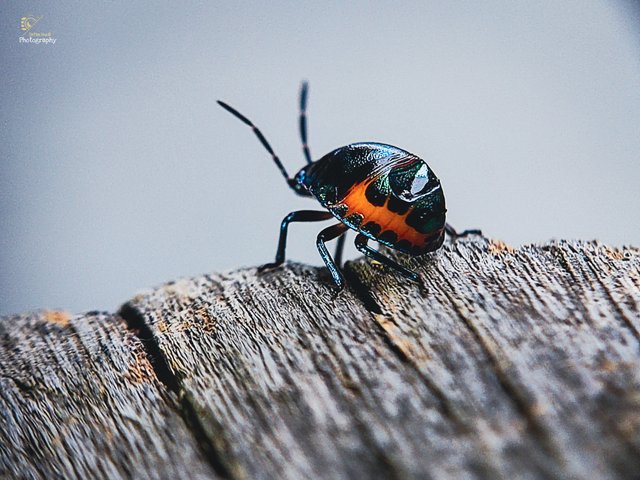

Good afternoon all friends of #BeautyOfCreativity (BOC)
The agricultural area is a paradise for various insects, this place promises a variety of food for living things, I found one of them, namely Jewel Bug as its inhabitants.
Jewel bugs are small to medium-sized oval-shaped bugs with a body length averaging at 5 to 20 mm (0.20 to 0.79 in).They can easily be distinguished from stink bugs (Pentatomidae) because the shield-like enlarged last section of their thorax (known as the scutellum, Latin for "little shield") completely covers the abdomen and the wings Despite their resemblance to beetles, jewel bugs are hemipterans or true bugs.The scutellum is an extension of the thorax, unlike the elytra of beetles which are hardened forewings. As such, jewel bugs have four membranous wings underneath the scutellum in contrast to two in beetles. The scutellum in jewel bugs also does not have a division in the middle and thus does not 'split open' when they take flight like in beetles. The heads of jewel bugs are triangular and the antennae have three to five segments.[8] Like all heteropterans, jewel bugs are characterized by a segmented beak-like mouthpart During feeding, jewel bugs inject proteolytic enzymes in their saliva into plants, digesting plant matter into a liquid form which they then suck up. The tarsus has three segments (tarsomeres)Colors
Note:
Also known as Metallic shield bug All jewel bugs feed on plants (phytophagous). The eggs are laid in compact clusters. They may be round or barrel-shaped with a lid or a cap at the top (known as the operculum). They also contain a ring of small protuberances near the cap called micropylar processes. They permit the passage of sperm into the egg for fertilization and enable gaseous exchange from within the egg and the outside world for the embryos. The eggs are white or cream colored when freshly laid but can change color as the embryo maturesWhen hatching, the prolarva (the advanced embryo) exit the egg by opening the lid through peristaltic movements and with the help of a T-shaped internal structure in the egg (known as the egg burster). Like all hemipterans, jewel bugs undergo incomplete metamorphosis (hemimetaboly) and do not possess larval and pupal stages. Instead the adults develop from several stages (instars) of nymphs (usually five) through successive moltings (ecdysis). Nymphs resemble the adults except for size and the absence of wings. They can be of different coloration or patterns from adults. Some species are known to exhibit parental care of eggs and nymphs.
https://www.projectnoah.org/spottings/2136806002
These are some of the photos that I managed to capture, with a combination of colors and very small body sizes, I had a little trouble during the process of taking pictures plus these insects are very active.

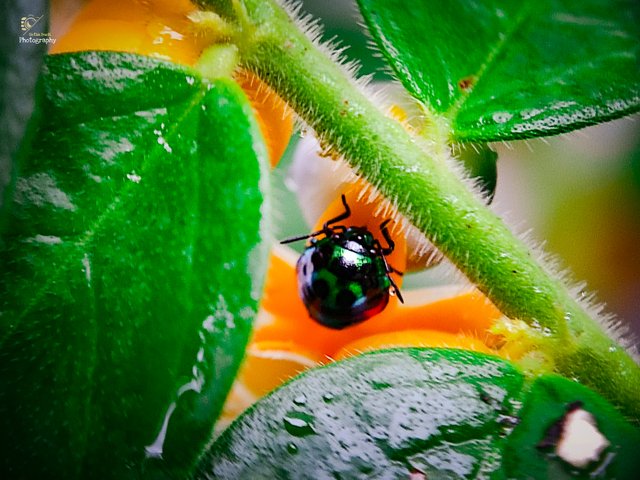
Scutelleridae - Jewel Bug
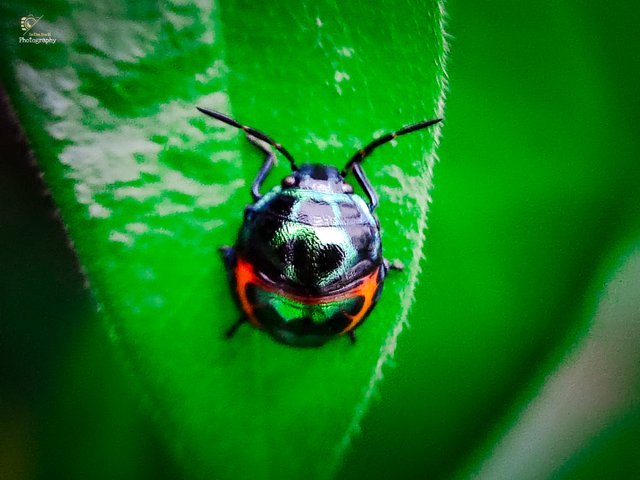
Scutelleridae - Jewel Bug
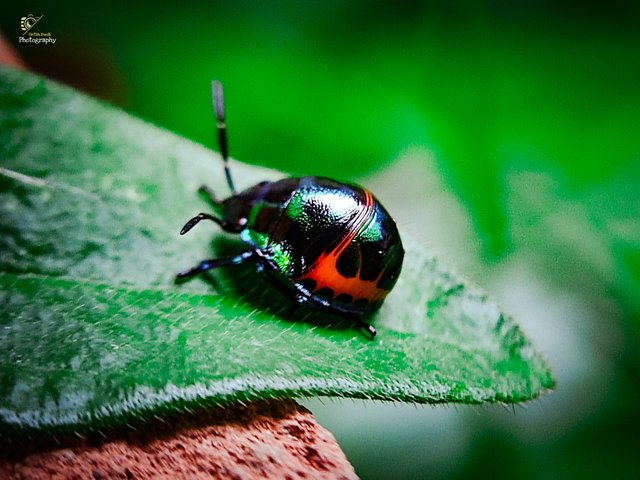
Scutelleridae - Jewel Bug

Scutelleridae - Jewel Bug
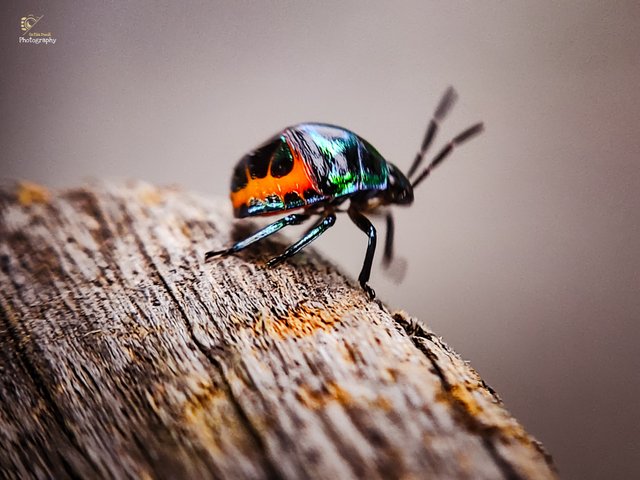
Scutelleridae - Jewel Bug
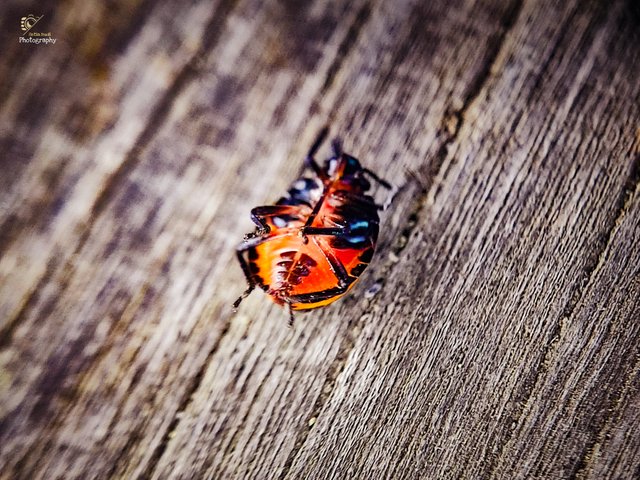
Scutelleridae - Jewel Bug
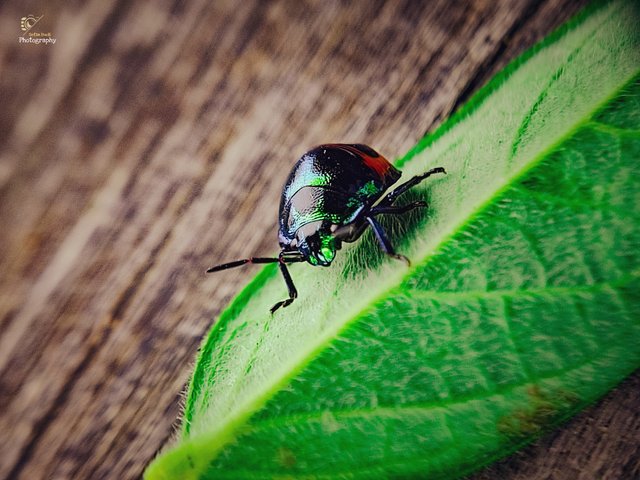
Scutelleridae - Jewel Bug
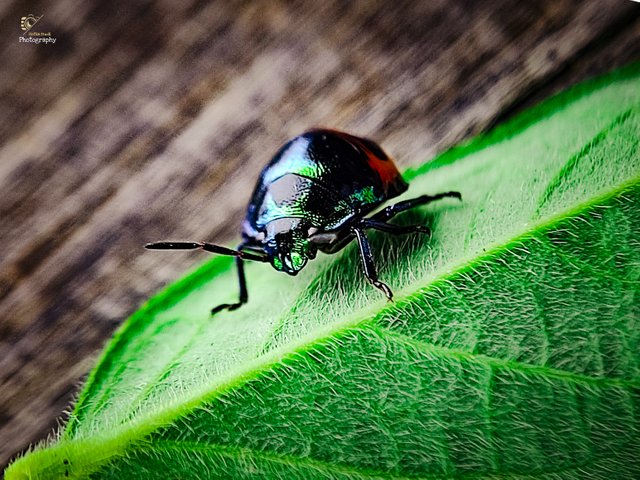
Scutelleridae - Jewel Bug
| 📷 Picture | Smartphone |
|---|---|
| Capture Using | POCO X3 Pro + Macrolens |
| Category | Animal Photography |
| Location | Pidie Jaya-Aceh |
| Editing | Photoshop Express |
Scutelleridae is a family of true bugs. They are commonly known as jewel bugs or metallic shield bugs due to their often brilliant coloration. They are also known as shield-backed bugs due to the enlargement of the thoracic scutellum into a continuous shield over the abdomen and wings.
https://en.m.wikipedia.org/wiki/Scutelleridae#cite_note-capinera-2.
So many posts today hope you like my photos, thank you for visiting my page, see you in the next post, greetings from me @setia.budi.


Downvoting a post can decrease pending rewards and make it less visible. Common reasons:
Submit
Wow nice macroshot of battle... good job dear great Macrophotography
Downvoting a post can decrease pending rewards and make it less visible. Common reasons:
Submit
Thanks
Downvoting a post can decrease pending rewards and make it less visible. Common reasons:
Submit
Very clear and great Macrophotography
Downvoting a post can decrease pending rewards and make it less visible. Common reasons:
Submit
Thank you
Downvoting a post can decrease pending rewards and make it less visible. Common reasons:
Submit
The picture you show is very beautiful.
Downvoting a post can decrease pending rewards and make it less visible. Common reasons:
Submit
Thanks...
Downvoting a post can decrease pending rewards and make it less visible. Common reasons:
Submit
Really good shot...👍👍👍
Downvoting a post can decrease pending rewards and make it less visible. Common reasons:
Submit
Thank you verry much
Downvoting a post can decrease pending rewards and make it less visible. Common reasons:
Submit
Very beautiful and colourful insect. Amazing clicks.
Downvoting a post can decrease pending rewards and make it less visible. Common reasons:
Submit
Thanks my brother
Downvoting a post can decrease pending rewards and make it less visible. Common reasons:
Submit
very beautiful macro photography. good job bro.
Downvoting a post can decrease pending rewards and make it less visible. Common reasons:
Submit
Thanks my brother
Downvoting a post can decrease pending rewards and make it less visible. Common reasons:
Submit
The color on his body makes this beetle even more beautiful.
Downvoting a post can decrease pending rewards and make it less visible. Common reasons:
Submit
Yups benar sekali
Downvoting a post can decrease pending rewards and make it less visible. Common reasons:
Submit